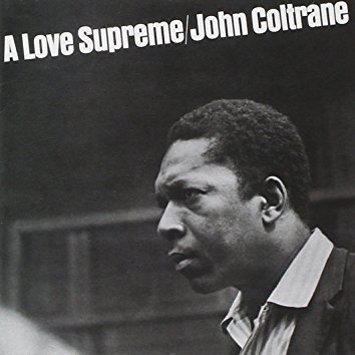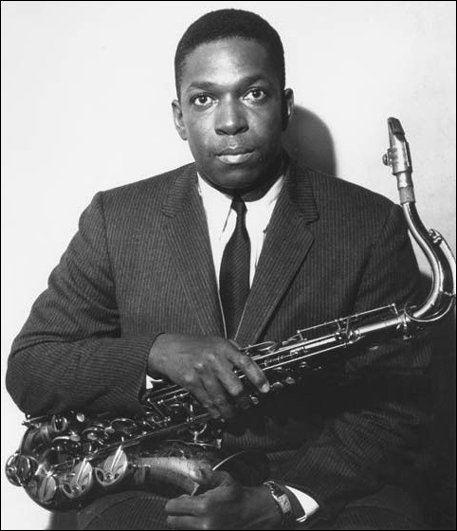John Coltrane (tenor sax), McCoy Tyner (piano), Jimmy Garrison (bass) and Elvin Jones (drums). From the album A Love Supreme (1965).
First a gong sounds to gather the congregation. In his introduction, Coltrane is like a priest calling his parishioners. Next, Garrison repeatedly plays four notes with his double bass. Then Tyner enters and later Coltrane plays the saxophone as if he were a priest who is moving towards ecstasy. Coltrane gradually breaks the melody down into groups of three notes called “triplets”, which represent the Father, the Son and the Holy Spirit.

Album cover
Coltrane then increasingly abandons the original structure of the stanza based on the Charlie Parker’s musical philosophy. You hear different melodies, but based on the same one. At a certain point, Coltrane launches a loud repeated shriek that marks the high point of the preaching. After the exaltation, the melody begins to fall of intensity and gradually the calm returns.

John Coltrane
Although the mass is over, the saxophonist repeatedly plays the four-note phrase interpreted at the beginning by the double bass, and which is the most important of the whole album. They are the four syllables of “A love supreme”, which is the equivalent of God. Then he plays them in the twelve tones of the musical scale. This means that just as these four notes cover all musical possibilities, God is everywhere. In addition, he repeats the phrase thirty-seven times, which is his age at the time, meaning that God has been with him all his life. Afterwards, Coltrane himself pronounces the phrase out loud: “A love supreme, a love supreme, a love supreme”. And the four notes continue playing until the end of the theme.

